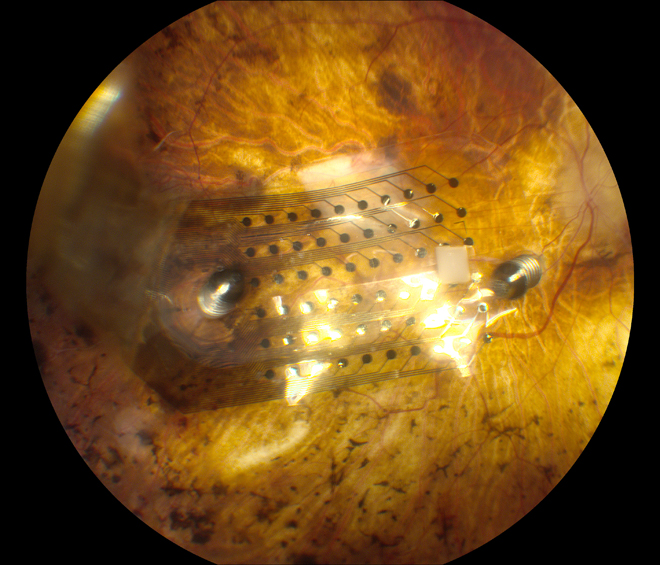Software upgrades to bionic eye enable color recognition, improve resolution, image focus, zooming
August 7, 2013

An Argus II device implanted over the eye’s macula. (Credit: UCSF)
The first bionic eye to be approved for patients in the U.S. is getting software upgrades.
As KurzweilAI has reported, the FDA-approved Argus II Retinal Prosthesis System from Second Sight Medical Products transmits images from a small, eye-glass-mounted camera wirelessly to a microelectrode array implanted on a patient’s damaged retina.
The array sends electrical signals via the optic nerve, and the brain interprets a visual image.
Software updates
Now, to speed up the development process, Second Sight is working on a software platform called Acuboost that would make updating previously manufactured Argus models as easy as updating your computer’s operating system, Wired reports.
This is especially important because the Argus is an implanted device, and installing it inside a patient’s eye requires pretty invasive surgery. So software upgrades would benefit both new patients and patients who already have the device implanted.
The company is currently developing algorithms to improve resolution, image focus and zooming. Their latest software can also automate brightness adjustments and enable color recognition.
Thus far, scientists at Second Sight have been able to produce the perception of multiple colors in the lab by sending different patterns of stimulation to each electrode in the retinal implant.
When the Argus camera picks up red or green, that information would be encoded through different patterns of electrical activity, which would be sent to the electrodes in the patient’s eye, creating the perception of color, says Wired.